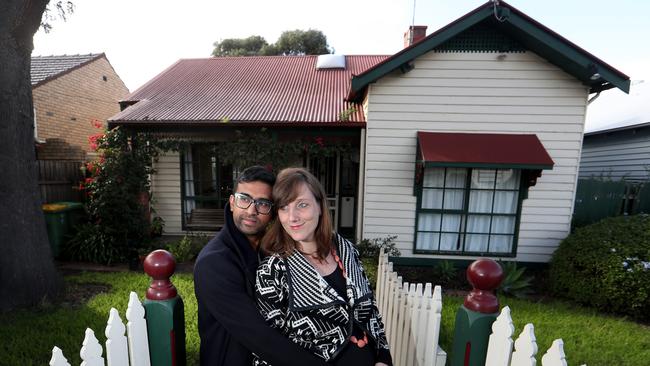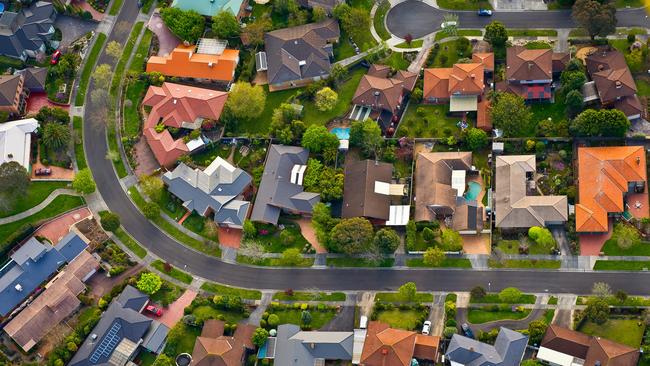Radical plan to dump stamp duty could aid Victoria’s post-coronavirus rebuild
Stamp duty could be ditched, with homeowners instead required to pay an annual tax on their land, if the state government opts for suggested radical reforms to get Victoria back on track in the wake of the coronavirus pandemic.

VIC News
Don't miss out on the headlines from VIC News. Followed categories will be added to My News.
Homeowners would pay an annual tax on their land instead of being slugged with stamp duty upfront in a radical reform that could be a centrepiece of Victoria’s post-coronavirus economic rebuild.
Victorians now have to stump up $45,770 when they buy a house at Melbourne’s median price of $845,000, with the state government reaping $6 billion a year.
But the Herald Sun can reveal the government is exploring a politically difficult plan to dump stamp duty in favour of a cheaper annual tax paid by homeowners, calculated on the value and size of their land.
A long-term transition to the new system would likely be necessary so homeowners are not taxed twice on properties they have recently purchased, and that could require Commonwealth help to cover a temporary fall in state revenue.
Prime Minister Scott Morrison has previously baulked at that, but scrapping stamp duty is a key recommendation of a Productivity Commission report he is now citing as a reform road map.
Experts say an annual land tax would improve housing affordability by reducing upfront costs, while encouraging people to sell high-value land, speeding up the development of cheaper housing options.
State government sources have confirmed the tax switch is being actively considered. “It would be the biggest shift in tax treatment … bigger than the GST,” one minister said.
The move would be problematic for lower-income families and retirees, but concessional rates and rebates could be applied or annual payments deferred until they sold their properties.
Reserve Bank Governor Philip Lowe last week called on governments to seize the spirit of co-operation seen during the coronavirus crisis to reform the economy, including how land was taxed.

A senior federal government figure agreed stamp duty reform had to be on the table as the nation looked to rebound from the worst economic downturn since the Great Depression.
Previous estimates suggest the reform could grow the national economy by $20 billion.
Stamp duty and land tax — now paid only on commercial properties and investment homes — was forecast to bring $9.5 billion into Victoria’s coffers this year, about 40 per cent of the state’s total tax take. But the pandemic is tipped to send property prices tumbling 9 per cent, blowing a hole in stamp duty as sales volumes also fall.
A property market slowdown, which eased late last year, had already blown a $5.2 billion hole in stamp duty revenue, highlighting its volatility.
Treasurer Tim Pallas said this month that “the way the states derive income” needed to be reformed. He has been backed by Premier Daniel Andrews, who said last week that “you can always count Victoria in” for national reforms.
Under a new system, the land tax rate would likely be calculated on the “unimproved value” of a person’s land, which would not factor in the cost of the home built on it.
A tax-free threshold could be carved out for low-value land, such as farms.
A state government spokesman said last night that no decisions had been made on tax reform, and their focus was on the coronavirus crisis.
HOW COULD IT WORK?
— About 200,000 properties change hands in Victoria every year, with buyers paying stamp duty to the government on their purchases upfront
— Stamp duty is calculated on a sliding scale and costs $45,770 at Melbourne’s median house price of $845,000
— Land tax is currently only paid on commercial properties and investment homes
— The state government is looking at scrapping stamp duty and charging all homeowners an annual land tax fee
— It would likely be calculated on the unimproved value of their land (not taking into account the value of what is built on their land)
— Tax rates would be set by the government, such as a dollar figure per square metre
— Lower income families and retirees who could not afford the annual fee could be offered concessional rates and rebates, or defer the payments until they sold their homes
— Low-value land such as farms could be exempt
READ MORE:
EASY EXPLAINER: HOW THE COVID-19 APP WORKS

